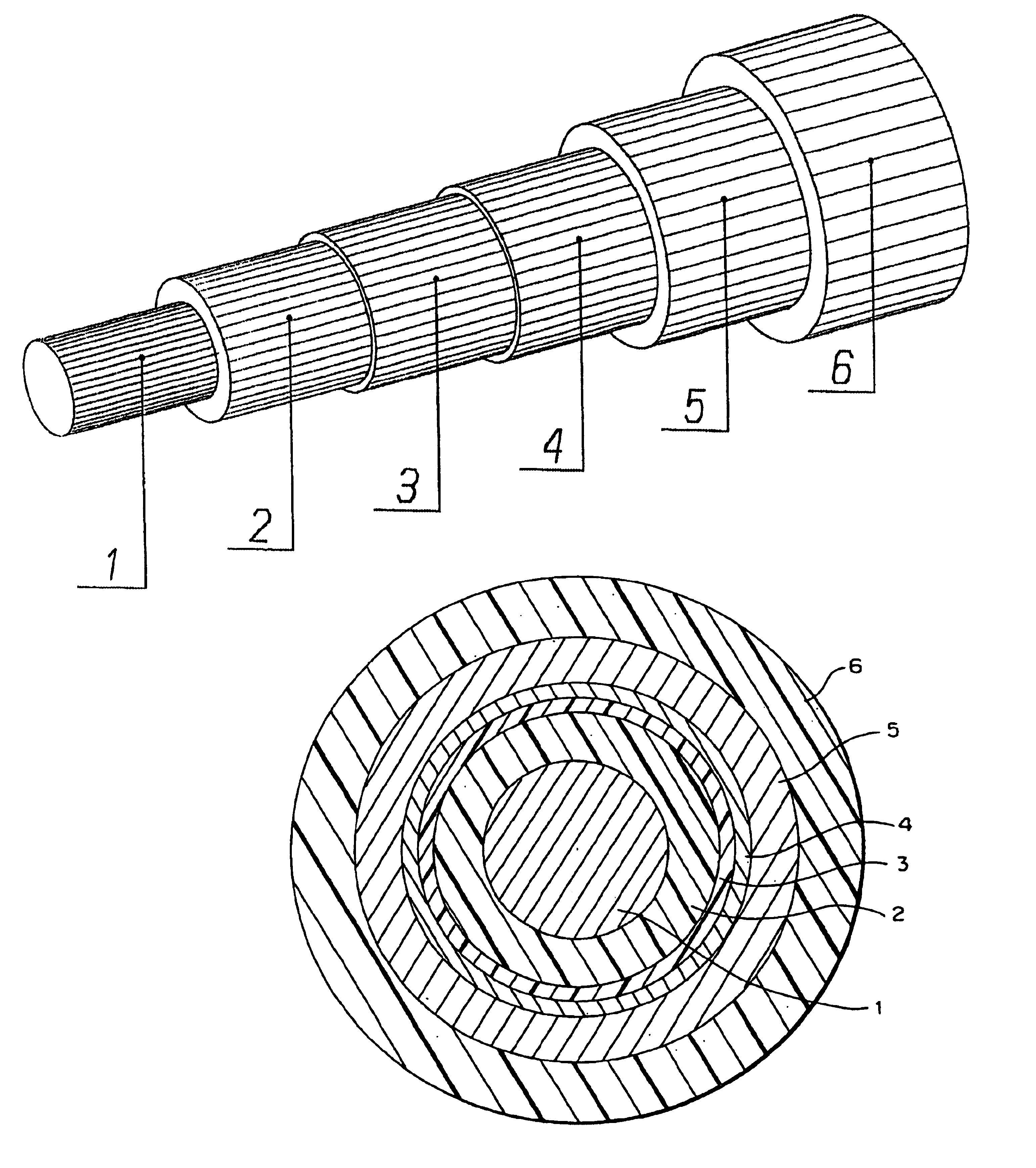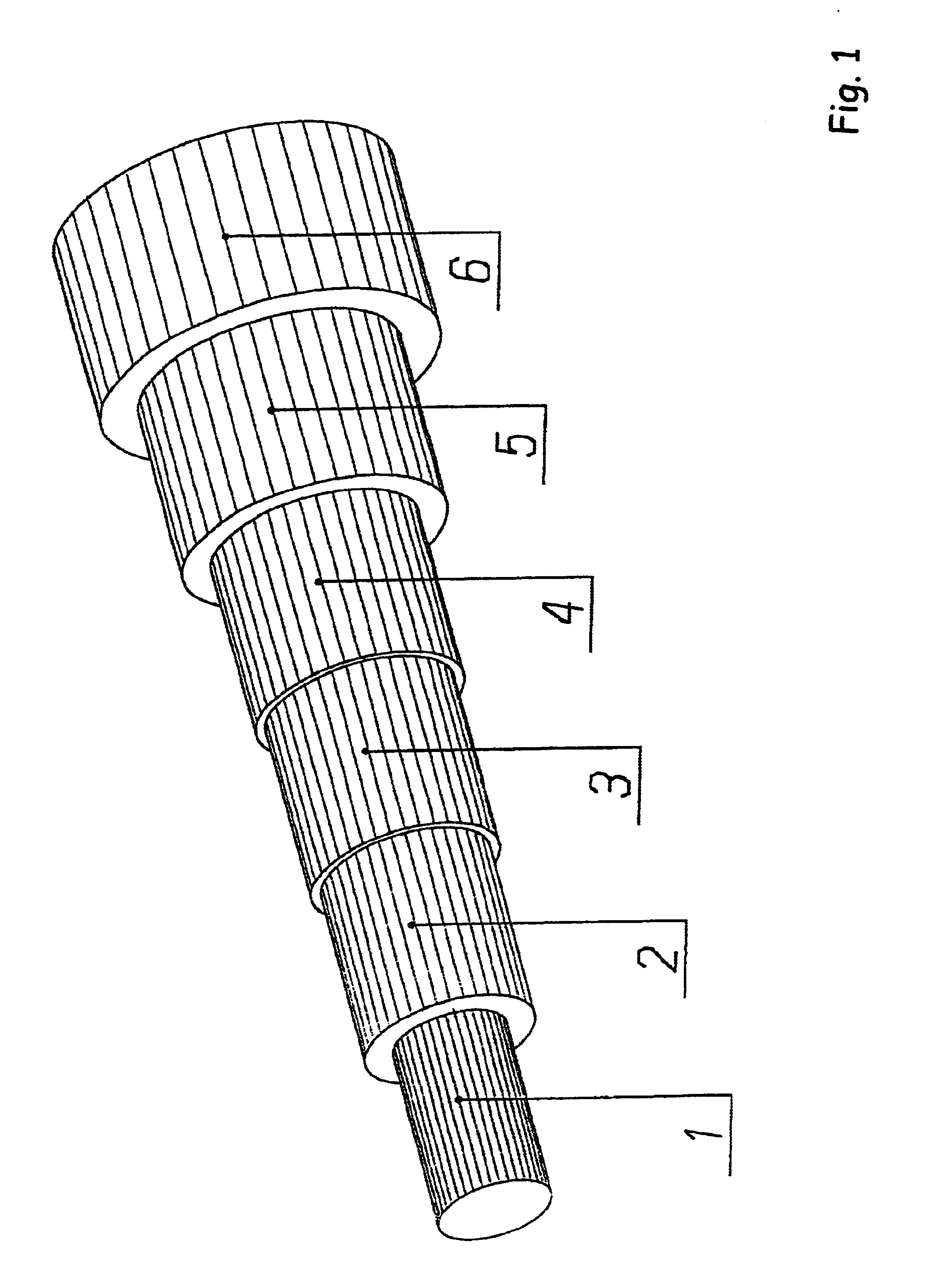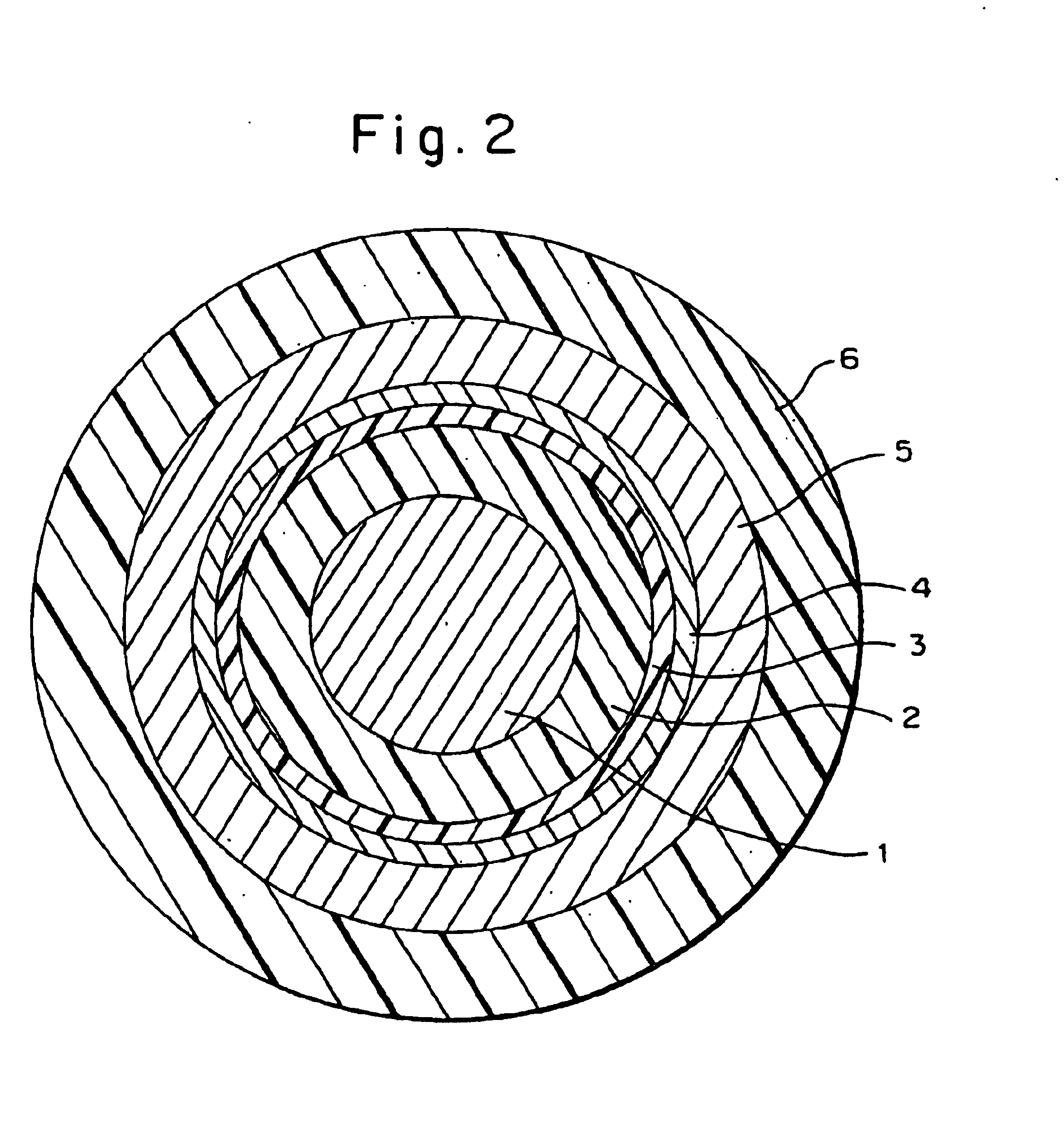Thin coaxial cable and method for its manufacture
a coaxial cable and thin technology, applied in the field of coaxial cables, can solve the problems of inability to obtain very thin insulator layers, structure is not suitable for thin wires, and the use of extruded fluorinated resins or extruded polypropylenes
- Summary
- Abstract
- Description
- Claims
- Application Information
AI Technical Summary
Benefits of technology
Problems solved by technology
Method used
Image
Examples
example 1
[0075]A cable made of a copper conductor of 20 μm diameter and with a glass insulation layer having a thickness of 5 micron, was coated with the isocyanate-based adhesion promoter Sika®-Primer 206 G+P (Sika Corporation, Mich., USA). This primer material consists of a solvent-based polyisocyanate composition comprising aliphatic polyisocyanate and tris(p-isocyanatophenyl)thiophosphate in the solvents n-butyl acetate, ethyl acetate and 2-methoxy-1-methylethyl acetate, and 5-10% carbon black. The primer was allowed to dry in air and the approximately 5 μm thick layer was then treated for 1.5 min. in a solution containing 360 gr / l chromic acid and 180 cc / l sulfuric acid. After rinsing, the cable was immersed in an acidic solution of palladium / stannous salts (Mactivate-10, MacDermid Inc., CT, USA), rinsed, immersed in an acidic solution of hydrochloric acid, rinsed again and coated with a conductive nickel layer in an ammoniacal electroless nickel solution containing nickel sulfate, sodi...
example 2
[0076]A cable made of a copper conductor of 35 μm diameter and with an organic enamel insulation layer made of polyesterimide having a thickness of 7.5 micron, was coated with the isocyanate-based adhesion promoter Sika®-Primer 209 (Sika Corporation, Mich., USA). This primer material consists of a solvent-based polyisocianate composition comprising diphenylmethanediisocyanate and the solvents n-butyl acetate, ethyl acetate and butanone, and 5-10% carbon black.
[0077]The primer layer was allowed to dry in air and then treated for 2 min. in a solution containing 360 gr / l chromic acid and 180 cc / l sulfuric acid. Further treatment of the cable was in the same sequence as described in Example 1 above. To test the elasticity of the copper shielding along the cable, a loop of 5 mm was formed and checked under a magnifying glass. There was no formation of cracks or fissures on the copper layer.
example 3
[0078]A cable made of a copper conductor of 35 μm diameter and with a organic enamel insulation made of polyesterimide having a thickness of 7.5 μm, was coated with a varnish made by dissolving an ABS plastic resin (General Electric) in butanone. The varnish was allowed to dry in air and then treated for 2 min in a solution containing 360 gr / l chromic acid and 180 cc / l sulfuric acid. Further treatment of the cable was in the same sequence as described in Example 1 above. To test the elasticity of the copper shielding along the cable, a loop of 5 mm was formed and checked under a magnifying glass. There was no formation of cracks or fissures on the copper layer.
PUM
| Property | Measurement | Unit |
|---|---|---|
| thickness | aaaaa | aaaaa |
| thick | aaaaa | aaaaa |
| thick | aaaaa | aaaaa |
Abstract
Description
Claims
Application Information
 Login to View More
Login to View More - R&D
- Intellectual Property
- Life Sciences
- Materials
- Tech Scout
- Unparalleled Data Quality
- Higher Quality Content
- 60% Fewer Hallucinations
Browse by: Latest US Patents, China's latest patents, Technical Efficacy Thesaurus, Application Domain, Technology Topic, Popular Technical Reports.
© 2025 PatSnap. All rights reserved.Legal|Privacy policy|Modern Slavery Act Transparency Statement|Sitemap|About US| Contact US: help@patsnap.com



